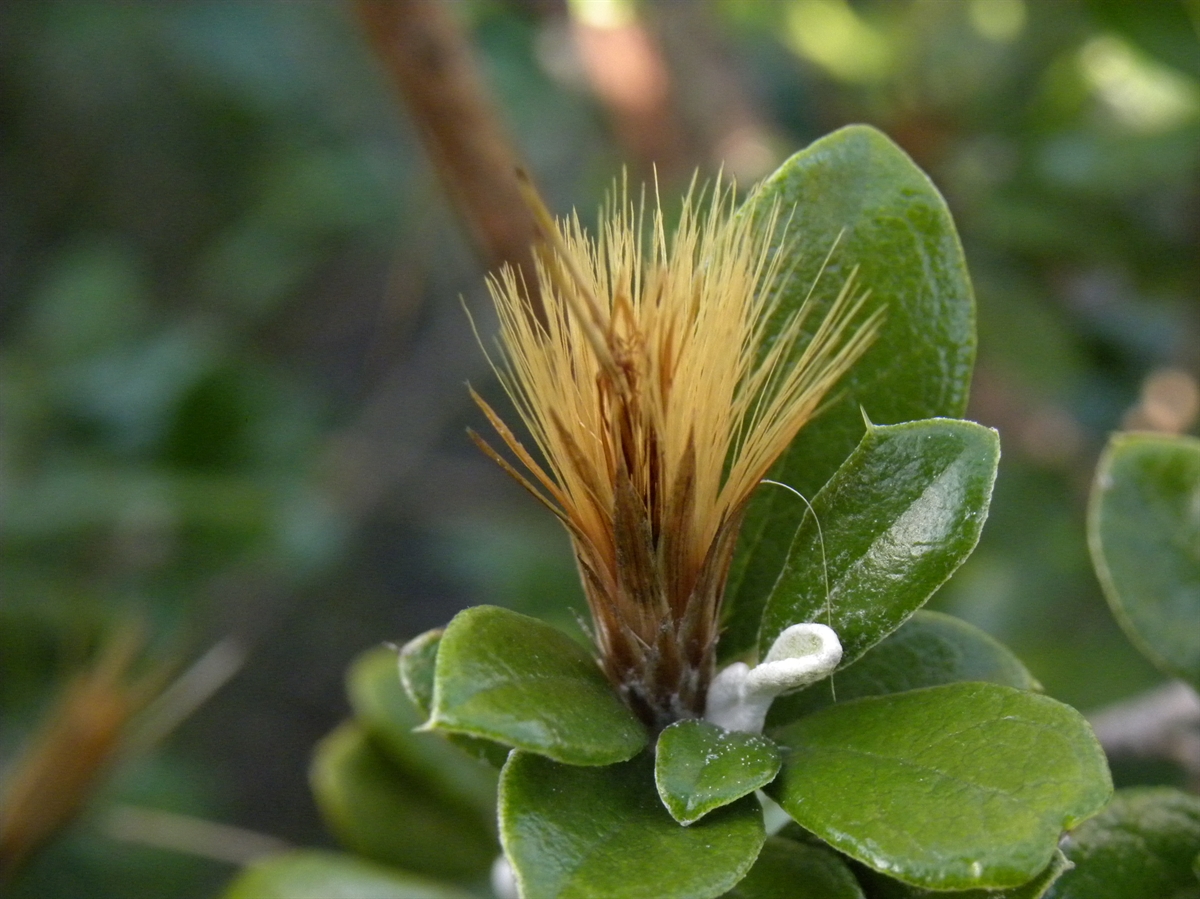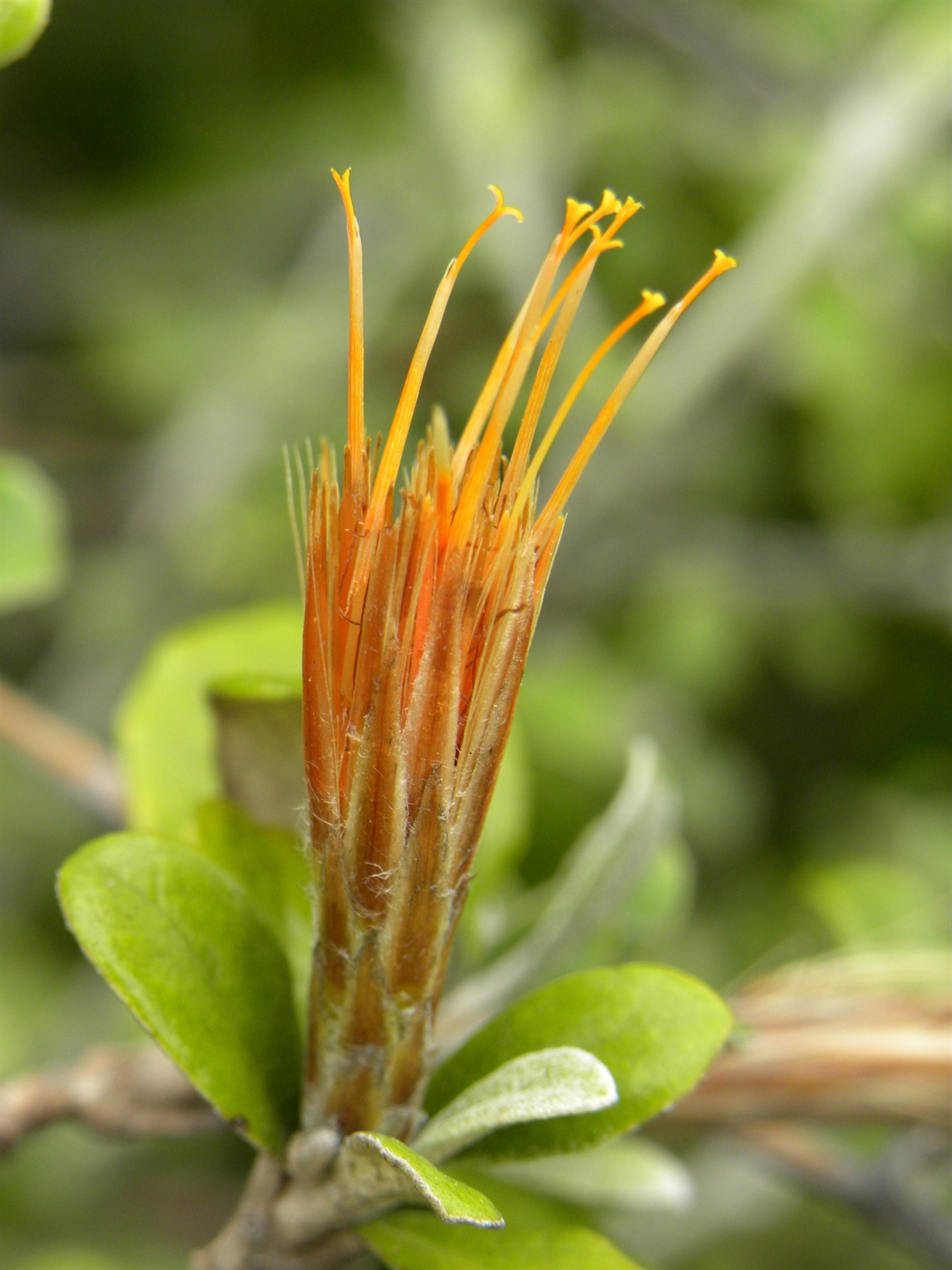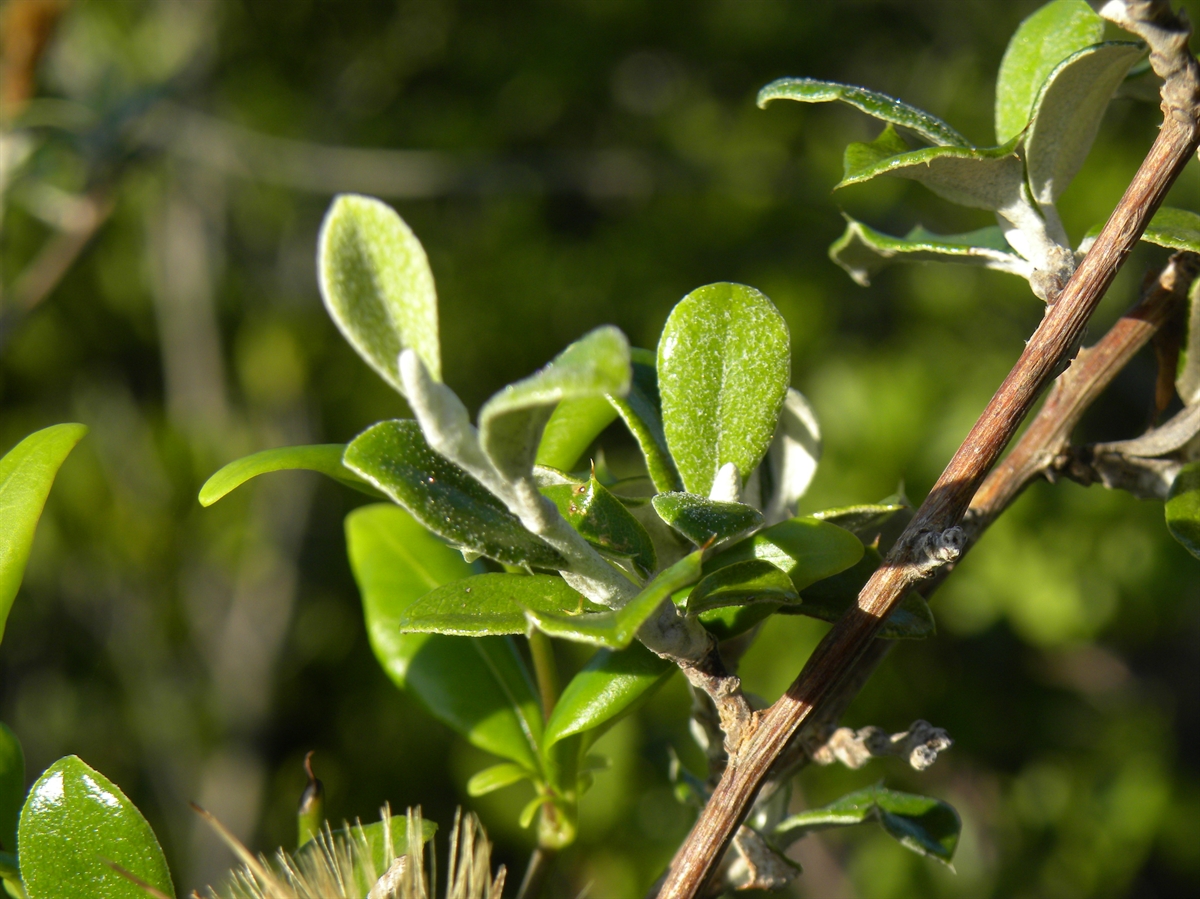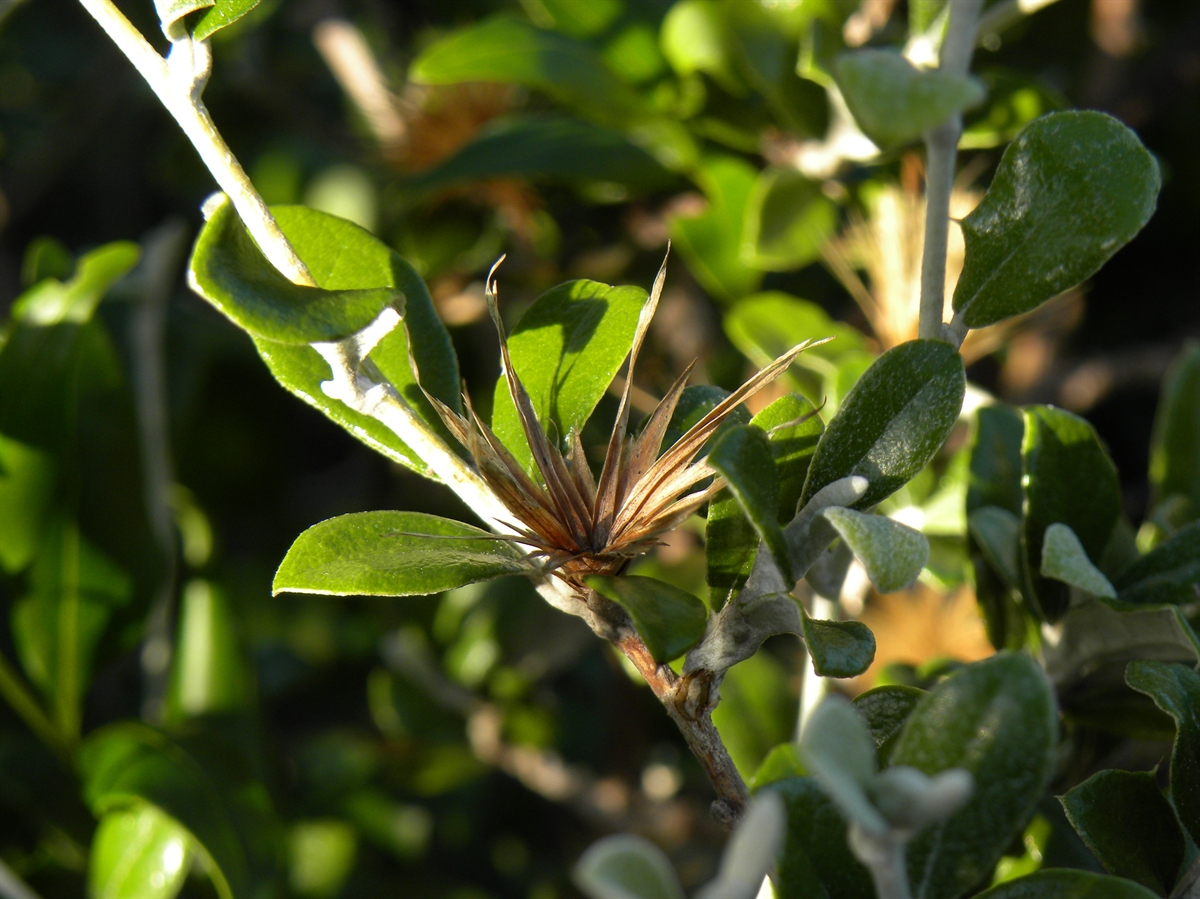Habit: Anastraphia pauciflosculosa grows as a medium to large shrub up to 3 meters in height. The leaves are arranged alternately, to 3 cm in length, coriaceous with a round leaf apex and a spiny revolute leaf margin. The leaf surface is tomentose on the abaxial surface.
The complete, perfect, actinomorphic flowers are arranged in heads in leaf axis and the tips of branches. The heads contain 6-12 flowers and are subtended by an involucre composed of 3-4 series of linear phyllaries that only slight recurved when the head is mature. The calyx is modified as hairs forming a pappus. The corolla has 5 fused, orange petals. There are 5 stamens fused along their filaments. The carpel has an inferior ovary with a single locule and seed. The fruit is an achene at maturity covered with the pappus at one end to assist in dispersal.
G. pauciflosculosa is differentiated from G. ilicifolia in that the involucre forms a cup and the phyllaries are only slightly recurved.
Habitat: Anastraphia pauciflosculosa grows in Dry Broadleaf Evergreen Formation – Shrublands (coppice/scrublands).
Distribution: Anastraphia pauciflosculosa is endemic to the central and southern islands of the Lucayan Archipelago.
Medicinal/Cultural/Economic usage: Anastraphia pauciflosculosa is not known to be used medicinally in the Lucayan Archipelago.



